
There are typically two types of clothing worn in Japan: traditional clothing known as Japanese clothing, including the national dress of Japan, the kimono, and Western clothing, which encompasses all else not recognised as either national dress or the dress of another country.
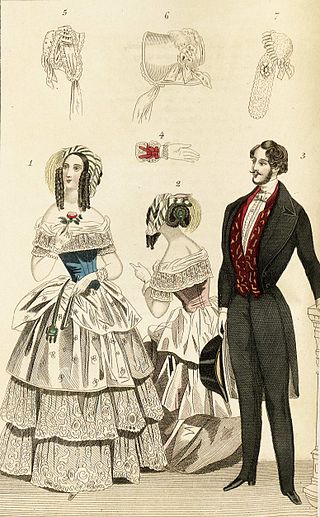
Victorian fashion consists of the various fashions and trends in British culture that emerged and developed in the United Kingdom and the British Empire throughout the Victorian era, roughly from the 1830s through the 1890s. The period saw many changes in fashion, including changes in styles, fashion technology and the methods of distribution. Various movement in architecture, literature, and the decorative and visual arts as well as a changing perception of gender roles also influenced fashion.

A skirt is the lower part of a dress or a separate outer garment that covers a person from the waist downwards. Originally made for both genders, it is currently made mainly for females.

Bell-bottoms are a style of trousers that become wider from the knees downward, forming a bell-like shape of the trouser leg.

The guayabera, also known as camisa de Yucatán, is a men's summer shirt, worn outside the trousers, distinguished by two columns of closely sewn pleats running the length of the front and back of the shirt. Typically made of linen, silk, or cotton, and appropriate for hot and/or humid weather, guayaberas are popular in Mexico, Central America, the Caribbean, South America, Southeast Asia, the south of Spain, and Portugal.
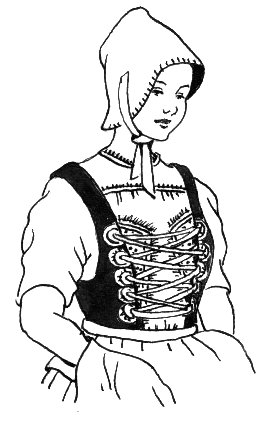
A bodice is an article of clothing traditionally for women and girls, covering the torso from the neck to the waist. The term typically refers to a specific type of upper garment common in Europe during the 16th to the 18th century, or to the upper portion of a modern dress to distinguish it from the skirt and sleeves. The name bodice is etymologically an odd plural spelling of "body" and comes from an older garment called a pair of bodies.
Clothing terminology comprises the names of individual garments and classes of garments, as well as the specialized vocabularies of the trades that have designed, manufactured, marketed and sold clothing over hundreds of years.

A dress shirt, button shirt, button-front, button-front shirt, or button-up shirt is a garment with a collar and a full-length opening at the front, which is fastened using buttons or shirt studs. A button-down or button-down shirt is a dress shirt with a button-down collar – a collar having the ends fastened to the shirt with buttons.

Fashion in the 1990s was defined by a return to minimalist fashion, in contrast to the more elaborate and flashy trends of the 1980s. One notable shift was the mainstream adoption of tattoos, body piercings aside from ear piercing and, to a much lesser extent, other forms of body modification such as branding.

A cuff is a layer of fabric at the lower edge of the sleeve of a garment at the wrist, or at the ankle end of a trouser leg. The function of turned-back cuffs is to protect the cloth of the garment from fraying, and, when frayed, to allow the cuffs to be readily repaired or replaced, without changing the garment. Cuffs are made by turning back (folding) the material, or a separate band of material can be sewn on, or worn separately, attached either by buttons or studs. A cuff may display an ornamental border or have lace or some other trimming. In US usage, the word trouser cuffs refers to the folded, finished bottoms of the legs of a pair of trousers. In the UK, while this usage is now sometimes followed, the traditional term for the turned up trouser hem is 'turnup'.

1840s fashion in European and European-influenced clothing is characterized by a narrow, natural shoulder line following the exaggerated puffed sleeves of the later 1820s and 1830s. The narrower shoulder was accompanied by a lower waistline for both men and women.

Fashion in the years 1750–1775 in European countries and the colonial Americas was characterised by greater abundance, elaboration and intricacy in clothing designs, loved by the Rococo artistic trends of the period. The French and English styles of fashion were very different from one another. French style was defined by elaborate court dress, colourful and rich in decoration, worn by such iconic fashion figures as Marie Antoinette.
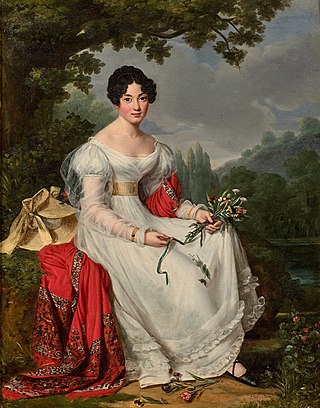
During the 1820s in European and European-influenced countries, fashionable women's clothing styles transitioned away from the classically influenced "Empire"/"Regency" styles of c. 1795–1820 and re-adopted elements that had been characteristic of most of the 18th century, such as full skirts and clearly visible corseting of the natural waist.

Fashion in the period 1700–1750 in European and European-influenced countries is characterized by a widening silhouette for both men and women following the tall, narrow look of the 1680s and 90s. This era is defined as late Baroque/Rococo style. The new fashion trends introduced during this era had a greater impact on society, affecting not only royalty and aristocrats, but also middle and even lower classes. Clothing during this time can be characterized by soft pastels, light, airy, and asymmetrical designs, and playful styles. Wigs remained essential for men and women of substance, and were often white; natural hair was powdered to achieve the fashionable look. The costume of the eighteenth century, if lacking in the refinement and grace of earlier times, was distinctly quaint and picturesque.

A pleat is a type of fold formed by doubling fabric back upon itself and securing it in place. It is commonly used in clothing and upholstery to gather a wide piece of fabric to a narrower circumference.

The neckline is the top edge of a garment that surrounds the neck, especially from the front view. Neckline also refers to the overall line between all the layers of clothing and the neck and shoulders of a person, ignoring the unseen undergarments.
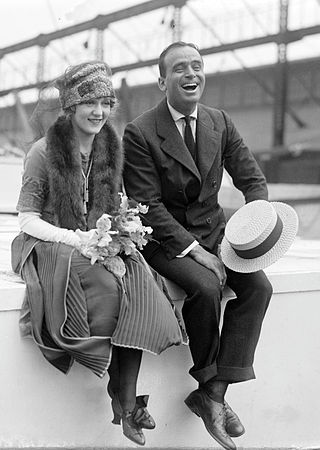
Western fashion in the 1920s underwent a modernization. Women's fashion continued to evolve from the restrictions of gender roles and traditional styles of the Victorian era. Women wore looser clothing which revealed more of the arms and legs, that had begun at least a decade prior with the rising of hemlines to the ankle and the movement from the S-bend corset to the columnar silhouette of the 1910s. Men also began to wear less formal daily attire and athletic clothing or 'Sportswear' became a part of mainstream fashion for the first time.
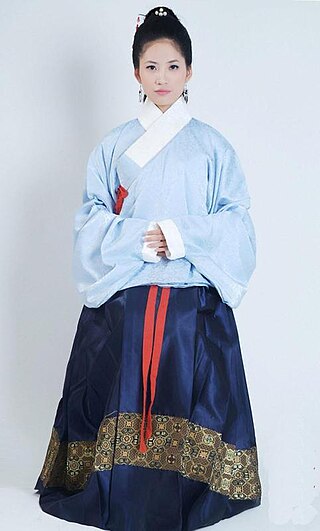
Ruqun is a set of attire in Hanfu which consists of a short jacket typically called ru worn under a long Chinese skirt called qun. However, when use as a general term, ruqun can broadly describe a set of attire which consists of a separated upper garment and a wrap-around lower skirt, or yichang, in which yi means the "upper garment" and the chang means the "lower garment". In a broad sense, ruqun can include the shanqun and aoqun in its definition.

Ancient Egyptian clothes refers to clothing worn in ancient Egypt from the end of the Neolithic period to the collapse of the Ptolemaic Kingdom with the death of Cleopatra in 30 BC. Egyptian clothing was filled with a variety of colors. Adorned with precious gems and jewels, the fashions of the ancient Egyptians were made for not only beauty but also comfort. Egyptian fashion was created to keep cool while in the hot desert.

The clothing style and fashion sense of the Philippines in the modern-day era have been influenced by the indigenous peoples, Chinese waves of immigration, the Spaniards, and the Americans, as evidenced by the chronology of events that occurred in Philippine history. At present, Filipinos conform their way of dressing based on classic fashion or prevailing fashion trends.





















